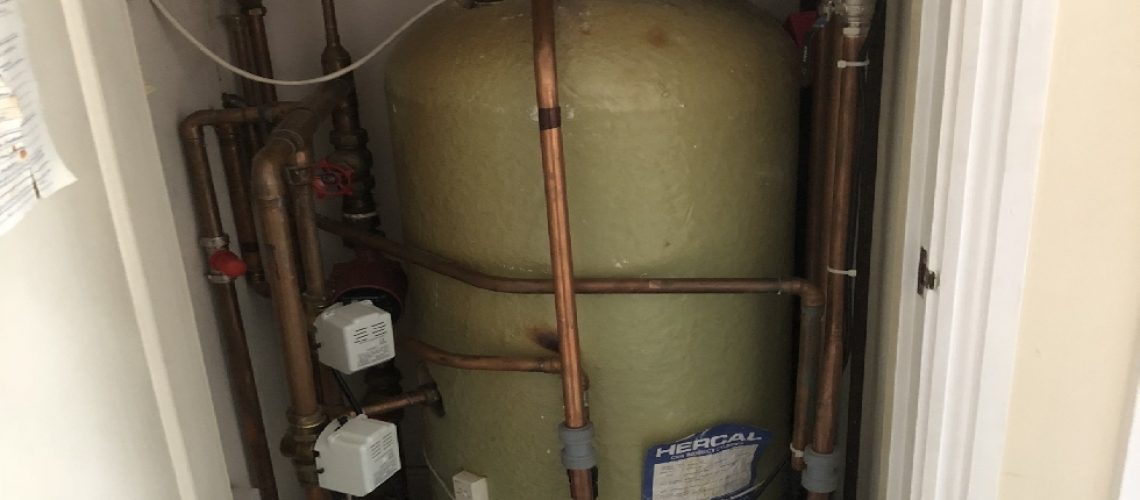There are two common methods for delivering hot water in domestic properties: Stored hot water (e.g. a cylinder), or instantaneous hot water (e.g. a combi boiler). In this blog, we will take a look at stored Hot Water.
Stored Hot Water
In a large number of houses built before the 21st Century, the typical stored hot water supply came in the form of a cylinder in the airing cupboard. Cylinders were either directly or indirectly heated.
If you had a gas boiler in the house, this cylinder would use the indirect method to heat the water. Direct cylinders heat the water from an element in the cylinder, via an immersion heater. These were common in homes without a central heating boiler for heating. [For more information on cylinders, follow this link here].
The most common form of stored hot water is an indirect cylinder. How does it work?
An indirect cylinder has two parts to it:
- The main chamber inside holds the water that will provide hot water to taps and showers. It has an inlet point at the bottom and an outlet point at the top.
- The coil is fitted inside the cylinder during manufacture and completely sealed from the main chamber. It has a flow and a return connection for the required heat source.
The Main Chamber
The tap water flows from the top of the cylinder where the water will be warmest. At the bottom of the cylinder, cold water is fed in to replace the hot water as it is used. In most cases, a stored tank of water would feed the cold supply into the cylinder. For safety, there is an escape pipe for the hot water which is the vent pipe. This pipe returns back to the loft and over the mains cold tank, where it can safely vent excessive hot water. Mains water pressure is too high to feed a standard indirect cylinder. The cold tank would usually be sited in the loft, or as high in the house as possible.
The Coil
The heat input required for an indirect cylinder is provided by central heating water heated in the gas boiler. The heated water from the boiler travels through a coil inside the cylinder. This coil is positioned in the lower half of the cylinder and transfers heat to the stored hot water that is connected to your taps or shower. The system water and the tap water never mix and are completely sealed from one another to prevent contamination.
Gravity Stored Hot Water
Early systems used a gravity feed; this required the gas boiler to be positioned lower in the house than the cylinder. The heated water would rise into the cylinder, and the returning cooler water would fall back to the gas boiler. Early examples were very inefficient; whenever the heating was used, the hot water would be on as well. It was also difficult to regulate the heat accurately and could take a long time to heat the water.
Pumped Stored Hot Water
Pumped hot water systems solve many problems. Controlling the hot water is greatly improved. Installing programmers use of thermostats and mechanical valves controlling the flow to the cylinder. The boiler location isn’t an issue anymore as the water is pumped. Plus the water would heat quicker as the flow from the boiler to the cylinder is much greater.
Summer/Back Up Stored Hot Water
In addition to these improvements, many indirect cylinders also feature direct heating options as well. Summer heating, via an immersion, turns the gas boiler off during the warmer months. This works efficiently if the electricity is used overnight to heat the water, and the hot water demands during the day were low. Direct hot water heating does provide an excellent back up if there are problems with the gas boiler.
Today, indirect hot water has moved on significantly. Unvented hot water systems are high-efficiency, high-recovery cylinders fed directly by mains water. These modern cylinders retain heat for much longer periods have excellent flow rates, providing quick filling baths and amazing shower experiences! You can find out more about these new systems in this blog.

